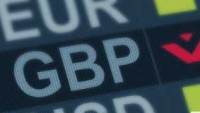 After a fairly decent 18 months the FTSE 100, DAX and S&P 500 swept into 2018 with some relatively good annual gains. The FTSE 100 gained 9%, the German DAX gained 12%, and the S&P 500 was up almost 20%.
After a fairly decent 18 months the FTSE 100, DAX and S&P 500 swept into 2018 with some relatively good annual gains. The FTSE 100 gained 9%, the German DAX gained 12%, and the S&P 500 was up almost 20%.
All three indices went on to post new record peaks early in 2018, but as we noted a year ago there were signs that the goldilocks scenario that the global economy experienced throughout 2017 might be starting to run out of steam.
Fears over rising populism appeared to recede in the wake of electoral defeats for parties who wanted to shake up the status quo for the more established political mainstream that had managed to hold sway across Europe for most of the last 20 years.
The election of Emmanuel Macron as a reforming French president, albeit on a fairly low turnout, was touted as a triumph of hope over pessimism, as an improving global outlook aided a strong economic rebound through 2017.
This meant that 2018 began with a lot more optimism than was the case at the beginning of 2017, despite some residual concerns about political stability in Spain in the wake of the Catalonia crackdown, while UK Prime Minister Theresa May’s fragile majority was always bound to be tested as the Brexit withdrawal agreement started to get fleshed out.
We even got a new German government after months of backroom bartering as the old Grand Coalition of the CSU/CDU and SPD got stitched back together, with Angela Merkel once again back at the helm.
Even the tensions with North Korea, which had been a staple of 2017, took a back seat as President Trump turned his attention to trade, particularly with China, as well as a raft of tax cuts. In doing so, introducing a significant fiscal stimulus to an already mature economic recovery in the US.

Source: CMC Markets
As can be seen from the graph above, we’ve seen some big losses in the second half of the year. The DAX lost the most ground, closely followed by the FTSE 100. US markets have outperformed but still look as if they could fall further, which if they do could prompt even steeper losses for already struggling European markets.
As mentioned earlier, we were starting to see some signs of fading momentum at the end of 2017, particularly with respect to European markets, however this turned out to be a little premature in the early part of this year. We got a last gasp rally in January, before rolling over in February and then March as the ‘Beast from the East’ brought Europe to a grinding halt.
This is where the divergence between US markets and European markets started to become really noticeable, despite a rally from the March lows, which saw US markets outpace their European counterparts throughout the summer. Q2 recovery saw US GDP come in at 4.2%, while European growth lagged behind, as President Trump started to ramp up his trade rhetoric against both the EU and China by implementing a raft of tariff measures, starting with aluminium and steel tariffs.
This protectionist agenda also helped push the US dollar up as fears about an overheating economy prompted the US Federal Reserve to continue their policy of hiking interest rates, with three already this year and a potential fourth to come.
Usually a stronger US dollar would help markets in Europe due to a weaker euro and pound, however, concerns about a slowing and deleveraging China, set against the prospect of an escalating trade war, helped put a brake on global demand. A higher oil price also contributed as prices rose to a peak of $87 a barrel in October, having started the year at $67 a barrel.
When we looked at the presidential scorecard at the end of 2017 and what markets had expected in that year, the US president hadn’t managed to deliver on any of his campaign promises of promising a fiscal boost, changing the tax code and changes to bank regulation.
This year he has managed to deliver some of these, fulfilling at least some of his mandate, while also looking to redraw the map when it comes to trade with the US’s trading partners.
Whether you agree or otherwise as to the effectiveness of his approach, investors can’t say they weren&rsquo t warned, and the volatility we’ve seen this year has been part and parcel of the President’s rather unusual approach. It’s cowboy diplomacy of an entirely different sort and something that is likely to continue, despite the setbacks he suffered in the midterm elections.
As we look ahead to the scorecard for 2019, and back at 2018, I think it’s safe to assume that the ‘buy the dip’ mentality that has been so effective over the last ten years may well now be over, given the declines we’ve seen in the last quarter or so.
The big question is whether the sell-off we’ve seen in the last few weeks has further to go or whether we’ve managed to hit a short-term base.
One of many reasons why investors have got more than a little spooked is down to valuations, as well as the outlook for global growth and concern over the direction of Fed policy, which has seen US yields slide sharply after peaking at multi-year highs earlier this year.
Uncertainty over the future direction of Fed policy has seen US policymakers start to resile from expectations around multipole rate rises next year, though markets still appear to be clinging to the possibility of one rate rise next year.
This is a far cry from the three to four that were being priced in three months ago, but even now that could well be on the optimistic side. Much will depend on how the US/China trade talks and truce play out in the weeks ahead and whether additional tariffs get imposed.
There is also concern about the direction of travel in respect of the European growth story, with Italy in danger of falling into recession in the last part of this year. The young pretender to Angela Merkel’s crown as the head of Europe also appears to have fallen flat on his face by neglecting France domestic policies in his desire for a more closely integrated Europe.
This ‘gilets jaunes’ protests which have blighted Paris are a classic case of political deafness to an increasingly squeezed middle that is fed up with fuel tax rises and cost of living pressures, while the more mobile tax base benefits from tax reductions. To take the sting out of this, President Macron has embarked on a massive spending giveaway which is likely to send the French budget deficit to 3.5% of GDP.
We shouldn’t forget about events in Italy and the standoff between the European Commission and the new populist Italian government over a budget deficit which amounts to 2.4% of GDP. The EU commission is going to find it very difficult to justify sanctioning Italy while allowing the French government to get away with similar such spendthrift behaviour. Unlike 2016, it will not be as easy to dismiss and in a glorious irony, the French finance minister at the time when France breached EU spending rules was none other than Pierre Moscovici, the current EU commissioner in charge of making sure Italy doesn’t breach its deficit targets. Et tu Pierre?
The EU also has to bear in mind that the Italian banking system remains far from fixed and rising borrowing costs could impact on the Italian banks’ ability to lend, while in Germany the concerns about the health of its biggest bank, Deutsche Bank aren’t likely to go away.
We continue to hear chatter about a merger with its biggest rival Commerzbank, where the German government has a 15% stake. It is becoming increasingly clear that Deutsche will struggle to cut its way back to health, and could well need some form of state support.
While state aid is considered illegal in the EU, in the face of its systemic importance any assistance is likely to be overlooked, however to combine two of Germany’s largest banks, each with their own set of unique problems strikes me as a complete act of folly, the equivalent of two drunks at a bar propping each other up. We saw in Spain a few years ago of the folly of rolling up failing or underperforming banks into one big bank, and how that ended up with Bankia. A failure of Deutsche would be Bankia on steroids and something that could bring the European economy to its knees.
We also have the small matter of dysfunctional politics in the UK as our political parties bicker and squabble internally as well as with each other, as to what type of Brexit deal the UK can get with the European Union.
As things stand the withdrawal agreement remains on the table, with no majority in the house for it to pass, and all options on the table as to what might happen next.
It remains surprising that Theresa May is still prime minister despite several whispers of confidence votes, cabinet rebellions, and multiple resignations. With the March 29th 2019 hard deadline looming, we still can’t rule out a government collapse, an extension of Article 50, a revocation of Article 50, another referendum, or even a general election.
If 2018 was the beginning of the end of the 10-year bull market, 2019 could well give stocks an additional shove to the downside.
We have already broken key levels this year on European markets with the FTSE 100, CAC 40 and DAX all breaking below some key long-term directional moving averages. We’ve also seen a death cross on the daily S&P 500 and Nasdaq 100 daily charts, though this hasn’t as yet been replicated on the Dow Jones.
If markets are unable to recover their momentum above these key technical break down levels then we could see further losses as we head into 2019.













